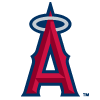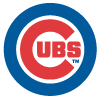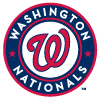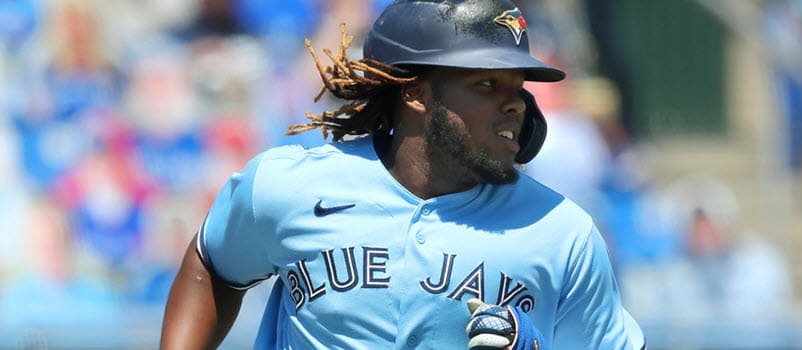This article is part of our MLB Barometer series.
Perhaps the most unique thing about baseball is just how much of it there is. Fans of other sports simply don't get to watch their teams play six or seven games per week or 162 games per year, with 15 games to watch around the league on most days.
There's something reassuring about the constant presence of baseball for six months of the year. Even as fans' eyes begin to wander toward the NBA and NHL playoffs, the Euros and eventually the start of the NFL season, baseball will always be there, offering more games than you could dream of watching every single night throughout the summer. You could spin that as monotonous and boring, but I personally find the stability and structure the game provides to the summer months to be part of the appeal.
We were robbed of the dog days by the shortened schedule last year. There's typically a period of the year where the excitement of a new season has worn off but the excitement of the stretch run is still far away, but there's simply no time for that in a 60-game schedule. That's been made apparent by the return to a normal schedule this season. We're just starting to enter that period now, yet every team has already played more than 60 games. If this were last year, the season would already be over, but we're thankfully still just settling in for the long haul.
Another thing that the 162-game schedule offers us is
Perhaps the most unique thing about baseball is just how much of it there is. Fans of other sports simply don't get to watch their teams play six or seven games per week or 162 games per year, with 15 games to watch around the league on most days.
There's something reassuring about the constant presence of baseball for six months of the year. Even as fans' eyes begin to wander toward the NBA and NHL playoffs, the Euros and eventually the start of the NFL season, baseball will always be there, offering more games than you could dream of watching every single night throughout the summer. You could spin that as monotonous and boring, but I personally find the stability and structure the game provides to the summer months to be part of the appeal.
We were robbed of the dog days by the shortened schedule last year. There's typically a period of the year where the excitement of a new season has worn off but the excitement of the stretch run is still far away, but there's simply no time for that in a 60-game schedule. That's been made apparent by the return to a normal schedule this season. We're just starting to enter that period now, yet every team has already played more than 60 games. If this were last year, the season would already be over, but we're thankfully still just settling in for the long haul.
Another thing that the 162-game schedule offers us is the ability to properly construct and follow narratives. Sure, there were players who started the season poorly before turning things around late last year and players who did the opposite, but all those stories were abruptly cut short. This year, we'll get to follow those stories to their conclusions. This week's column features many such players whose recent performances differ from what they showed early in the year, for better or for worse. If this were last year, that would be everything we're able to say about those players, but this time around, we'll get to find out whether their recent form is merely a blip or instead the beginning of them becoming different players.
RISERS
 Vladimir Guerrero, 1B, Blue Jays: Sure, it's not exactly news that Guerrero is a good hitter. He deserves the headline spot here, however, thanks to the ridiculous tear he's been on over his last 27 games, a run which was capped by a homer in all three games of the weekend series against the Red Sox. Even before that run started, his breakout season was already apparent, as his .307/.432/.543 line through 36 games was already a huge step up from the .269/.336/.442 line he produced over his first two seasons, numbers that would be excellent for most 20- and 21-year-olds, but which fell short of the lofty expectations that had been placed on Guerrero ever since he was a teenager. Two years as merely a good hitter may have caused many to believe he'd been overhyped, but that seemingly couldn't be further from the case. During that aforementioned 27-game run, he's hit .392/.474/.876 with 13 homers, walking 15 times to go with 15 strikeouts. He's showing an incredible blend of power and contact at just 22 years old, leading the league with 21 homers and sitting tied for second with a .344 average, and is making the case for what could be the first of many MVP trophies. Not bad for a hitter who was drafted outside the top three rounds in NFBC drafts over the winter.
Vladimir Guerrero, 1B, Blue Jays: Sure, it's not exactly news that Guerrero is a good hitter. He deserves the headline spot here, however, thanks to the ridiculous tear he's been on over his last 27 games, a run which was capped by a homer in all three games of the weekend series against the Red Sox. Even before that run started, his breakout season was already apparent, as his .307/.432/.543 line through 36 games was already a huge step up from the .269/.336/.442 line he produced over his first two seasons, numbers that would be excellent for most 20- and 21-year-olds, but which fell short of the lofty expectations that had been placed on Guerrero ever since he was a teenager. Two years as merely a good hitter may have caused many to believe he'd been overhyped, but that seemingly couldn't be further from the case. During that aforementioned 27-game run, he's hit .392/.474/.876 with 13 homers, walking 15 times to go with 15 strikeouts. He's showing an incredible blend of power and contact at just 22 years old, leading the league with 21 homers and sitting tied for second with a .344 average, and is making the case for what could be the first of many MVP trophies. Not bad for a hitter who was drafted outside the top three rounds in NFBC drafts over the winter.
 Tarik Skubal, SP, Tigers: Skubal was an interesting rookie last season for the strikeout-obsessed among us, as he recorded an incredible 37.1 percent strikeout rate in 145 minor-league innings. He did miss a fair amount of bats in his 32-inning debut last year, but his 27.6 percent strikeout rate wasn't high enough to overcome a 27.7 percent groundball rate, the third-lowest mark among pitchers who threw at least 30 innings, as he finished the year with a 5.63 ERA. It looked like he was taking a step back at the start of this season, as he finished April with an even lower 21.4 percent groundball rate while his strikeout rate collapsed to 17.3 percent, leading to a 6.14 ERA. Since the calendar flipped to May, however, he looks to be delivering on his promise. His 37.1 percent groundball rate is still low but is far higher than anything he's shown in the past, while his excellent 34.8 percent strikeout rate has carried him to a 3.32 ERA. The young lefty is still far from a finished product, but there's plenty of reason to buy into his turnaround given the elite strikeout stuff he showed in the minors.
Tarik Skubal, SP, Tigers: Skubal was an interesting rookie last season for the strikeout-obsessed among us, as he recorded an incredible 37.1 percent strikeout rate in 145 minor-league innings. He did miss a fair amount of bats in his 32-inning debut last year, but his 27.6 percent strikeout rate wasn't high enough to overcome a 27.7 percent groundball rate, the third-lowest mark among pitchers who threw at least 30 innings, as he finished the year with a 5.63 ERA. It looked like he was taking a step back at the start of this season, as he finished April with an even lower 21.4 percent groundball rate while his strikeout rate collapsed to 17.3 percent, leading to a 6.14 ERA. Since the calendar flipped to May, however, he looks to be delivering on his promise. His 37.1 percent groundball rate is still low but is far higher than anything he's shown in the past, while his excellent 34.8 percent strikeout rate has carried him to a 3.32 ERA. The young lefty is still far from a finished product, but there's plenty of reason to buy into his turnaround given the elite strikeout stuff he showed in the minors.
 Lucas Sims, RP, Reds: The Reds may still not have a true closer, but it sure looks as though the job effectively belongs to Sims, as he's recorded five of the team's last seven saves. Since the start of the season, only Tejay Antone has been used in higher-leverage situations than Sims among Reds relievers (as measured by the leverage index when he enters the game), and Antone is currently out with forearm inflammation. Amir Garrett was supposed to be Sims' primary competition for saves, but he's recorded just two all year to go along with a 9.17 ERA. Sims' 4.62 ERA isn't particularly good, either, but that's mostly a product of his early struggles. His ERA through 11 appearances sat at 7.20, which perhaps isn't too surprising given his spring preparation was set back by elbow tightness. He's turned things around dramatically over his last 13 trips to the mound, posting a 2.93 ERA and 1.17 WHIP while striking out 35.9 percent of opposing batters. It would be nice if he was officially given the closer label, but he's certainly been pitching like one and should offer a fair number of saves to go along with strong ratios.
Lucas Sims, RP, Reds: The Reds may still not have a true closer, but it sure looks as though the job effectively belongs to Sims, as he's recorded five of the team's last seven saves. Since the start of the season, only Tejay Antone has been used in higher-leverage situations than Sims among Reds relievers (as measured by the leverage index when he enters the game), and Antone is currently out with forearm inflammation. Amir Garrett was supposed to be Sims' primary competition for saves, but he's recorded just two all year to go along with a 9.17 ERA. Sims' 4.62 ERA isn't particularly good, either, but that's mostly a product of his early struggles. His ERA through 11 appearances sat at 7.20, which perhaps isn't too surprising given his spring preparation was set back by elbow tightness. He's turned things around dramatically over his last 13 trips to the mound, posting a 2.93 ERA and 1.17 WHIP while striking out 35.9 percent of opposing batters. It would be nice if he was officially given the closer label, but he's certainly been pitching like one and should offer a fair number of saves to go along with strong ratios.
 Justin Upton, OF, Angels: Upton might not be as old as you think. He debuted all the way back in 2007 but was still just 19 years old, so while his .210/.301/.418 line over the last two seasons may have looked like someone in the final stages of his career, we shouldn't be too shocked at his apparent renaissance in his age-33 season. It looked like this year was going to be more of the same through his first 39 games, as he hit .188/.271/.391. He was moved into the leadoff role despite those struggles on May 23, however, and the turnaround could hardly be more dramatic. In his last 18 games, he's hit .333/.444/.682 with six homers. His 24.7 percent strikeout rate over that stretch would be his lowest mark since 2012, while his 17.3 percent walk rate would be his best mark ever. It's still a small sample, and he certainly won't stay quite this hot the rest of the way, but it's easier to buy into small samples when they've come from a player who's reached the heights Upton did in the past.
Justin Upton, OF, Angels: Upton might not be as old as you think. He debuted all the way back in 2007 but was still just 19 years old, so while his .210/.301/.418 line over the last two seasons may have looked like someone in the final stages of his career, we shouldn't be too shocked at his apparent renaissance in his age-33 season. It looked like this year was going to be more of the same through his first 39 games, as he hit .188/.271/.391. He was moved into the leadoff role despite those struggles on May 23, however, and the turnaround could hardly be more dramatic. In his last 18 games, he's hit .333/.444/.682 with six homers. His 24.7 percent strikeout rate over that stretch would be his lowest mark since 2012, while his 17.3 percent walk rate would be his best mark ever. It's still a small sample, and he certainly won't stay quite this hot the rest of the way, but it's easier to buy into small samples when they've come from a player who's reached the heights Upton did in the past.
 Miguel Andujar, OF, Yankees: Andujar's inclusion here follows a similar theme to Upton's, namely, that it's easier to buy into a strong small sample when it matches a level a player has shown previously. Andujar looked like potentially the next big thing back in 2018, when he hit .297 with 27 homers in his first full season. His next two seasons were marred by injury and underperformance, however, as he went on to hit just .193/.219/.257 in 33 games. A hand issue prevented him from making the Opening Day roster this season, and it looked like he was set to offer more of the same upon his promotion in early May, as he hit just .226/.226/.242 over his first 18 games. He's turned things around dramatically over his last 11 contests, however, hitting .317/.341/.683 with five homers. Even with Andujar's poor start factored in, Statcast likes what he's doing this year, giving him a .282 xBA and .477 xSLG, both of which beat his 2018 marks. He's walking at just a 1.9 percent clip, so his value takes a big hit in on-base percentage leagues, but he was supposed to hit for both power and contact as a prospect and appears to be doing that again. It's easy to buy into his brief success given his past pedigree and his everyday role at Yankee Stadium.
Miguel Andujar, OF, Yankees: Andujar's inclusion here follows a similar theme to Upton's, namely, that it's easier to buy into a strong small sample when it matches a level a player has shown previously. Andujar looked like potentially the next big thing back in 2018, when he hit .297 with 27 homers in his first full season. His next two seasons were marred by injury and underperformance, however, as he went on to hit just .193/.219/.257 in 33 games. A hand issue prevented him from making the Opening Day roster this season, and it looked like he was set to offer more of the same upon his promotion in early May, as he hit just .226/.226/.242 over his first 18 games. He's turned things around dramatically over his last 11 contests, however, hitting .317/.341/.683 with five homers. Even with Andujar's poor start factored in, Statcast likes what he's doing this year, giving him a .282 xBA and .477 xSLG, both of which beat his 2018 marks. He's walking at just a 1.9 percent clip, so his value takes a big hit in on-base percentage leagues, but he was supposed to hit for both power and contact as a prospect and appears to be doing that again. It's easy to buy into his brief success given his past pedigree and his everyday role at Yankee Stadium.
FALLERS
 Luis Severino, SP, Yankees: I'm typically as interested in stashing star pitchers coming back from injury as I am in stashing prospects, as those pitchers come with multiple advantages. Most importantly, they've already proven themselves at the highest level, something even the most exciting prospects haven't yet done. They also theoretically have a clear return date you can plan around, which isn't the case for prospects, where you typically can't do much more than guess at how their service time will be manipulated. Unfortunately, it's never too wise to feel confident in a player's reported return date, as the latest crop of widely stashed pitchers has demonstrated.
Luis Severino, SP, Yankees: I'm typically as interested in stashing star pitchers coming back from injury as I am in stashing prospects, as those pitchers come with multiple advantages. Most importantly, they've already proven themselves at the highest level, something even the most exciting prospects haven't yet done. They also theoretically have a clear return date you can plan around, which isn't the case for prospects, where you typically can't do much more than guess at how their service time will be manipulated. Unfortunately, it's never too wise to feel confident in a player's reported return date, as the latest crop of widely stashed pitchers has demonstrated.
This year's draft season offered us three excellent pitchers to choose from as they recovered from Tommy John surgery: Severino, Noah Syndergaard and Chris Sale. Sale initially looked like he was set to return the latest out of the trio, but he now might be the only one worth holding onto, providing a useful reminder that betting on injured pitchers is just as much of a gamble as betting on prospects. Syndergaard may not even get to throw a pitch this season, as he's in the middle of a six-week shutdown period after suffering a setback (elbow inflammation) in late May. Severino's prognosis is more encouraging, but I'm not sure I'd be holding onto him either in most single-season formats. At least he isn't dealing with an arm injury, but he had to be helped off the field with a groin issue during a rehab start Saturday. His exact timeline should become clear soon once the results of his MRI are known, but anything more than a minor setback could see him returning too late in the year to be worth holding on to.
 Javier Baez, SS, Cubs: Even when things were going fairly well for Baez at the start of this season, there was reason to be skeptical about how long that would last. He hit a lopsided but effective .257/.291/.523 over his first 29 games of the year, adding eight homers and six steals, but that came with an awful combination of a 35.9 percent strikeout rate and 2.6 percent walk rate. Plate discipline that poor was bound to catch up to him at some point, and it looks like it has, as he's hit .214/.250/.408 over 28 games since then. Zooming in on just his last 10 games, things look even worse, as he's hitting a miserable .128/.150/.359 over that stretch while striking out in a whopping 47.5 percent of his plate appearances. He can potentially blame the thumb soreness that caused him to miss four games over that stretch for some of his issues, and he still flashed upside with three homers and a steal, but these are the sorts of slumps you have to put up with from time to time when you have a player who strikes out as often as Baez does on your roster.
Javier Baez, SS, Cubs: Even when things were going fairly well for Baez at the start of this season, there was reason to be skeptical about how long that would last. He hit a lopsided but effective .257/.291/.523 over his first 29 games of the year, adding eight homers and six steals, but that came with an awful combination of a 35.9 percent strikeout rate and 2.6 percent walk rate. Plate discipline that poor was bound to catch up to him at some point, and it looks like it has, as he's hit .214/.250/.408 over 28 games since then. Zooming in on just his last 10 games, things look even worse, as he's hitting a miserable .128/.150/.359 over that stretch while striking out in a whopping 47.5 percent of his plate appearances. He can potentially blame the thumb soreness that caused him to miss four games over that stretch for some of his issues, and he still flashed upside with three homers and a steal, but these are the sorts of slumps you have to put up with from time to time when you have a player who strikes out as often as Baez does on your roster.
 Nick Solak, 2B/OF, Rangers: Solak looked like a potential hidden gem in the early part of the season, as he hit .301/.379/.534 through his first 28 games while adding seven homers and a pair of steals. A .381 BABIP may have had a lot to do with that, however, so it perhaps shouldn't be surprising that he's come crashing back to earth since then. Over his last 38 contests, he's hit .177/.248/.277, clearing the fence just once. Again, his .235 BABIP may tell some of the story, though he's also seen his barrel rate drop from 14.3 percent over the strong stretch to 5.8 percent over the poor one. Given he didn't show much to get excited about at the plate last season, hitting a respectable .268 but homering just twice in 58 games, and given he may not have much growth ahead of him at age 26, it may be time to start thinking about dropping him in shallower formats.
Nick Solak, 2B/OF, Rangers: Solak looked like a potential hidden gem in the early part of the season, as he hit .301/.379/.534 through his first 28 games while adding seven homers and a pair of steals. A .381 BABIP may have had a lot to do with that, however, so it perhaps shouldn't be surprising that he's come crashing back to earth since then. Over his last 38 contests, he's hit .177/.248/.277, clearing the fence just once. Again, his .235 BABIP may tell some of the story, though he's also seen his barrel rate drop from 14.3 percent over the strong stretch to 5.8 percent over the poor one. Given he didn't show much to get excited about at the plate last season, hitting a respectable .268 but homering just twice in 58 games, and given he may not have much growth ahead of him at age 26, it may be time to start thinking about dropping him in shallower formats.
 Alex Wood, SP, Giants: Wood's apparent resurgence in the early part of this season looked like it was shaping up to be one of the better stories of the year. He's had plenty of effective seasons in the past, posting a 3.29 ERA over his first six seasons, but he battled injuries for much of the last two years and was ineffective when available, struggling to a 5.96 ERA over 48.1 frames. Through the end of May, he looked to be not just back to form but reaching another level entirely, as his 2.44 ERA and 1.04 WHIP through eight starts came with a 26.3 percent strikeout rate and a 5.8 percent walk rate, numbers which would both have been career bests had he maintained them all season. He's completely collapsed over his last two outings, however, allowing 11 runs in nine innings while walking seven batters and striking out just four. This could turn out to be nothing more than a two-start blip for the lefty, but given how poor he was over the last two seasons, there's reason to be concerned.
Alex Wood, SP, Giants: Wood's apparent resurgence in the early part of this season looked like it was shaping up to be one of the better stories of the year. He's had plenty of effective seasons in the past, posting a 3.29 ERA over his first six seasons, but he battled injuries for much of the last two years and was ineffective when available, struggling to a 5.96 ERA over 48.1 frames. Through the end of May, he looked to be not just back to form but reaching another level entirely, as his 2.44 ERA and 1.04 WHIP through eight starts came with a 26.3 percent strikeout rate and a 5.8 percent walk rate, numbers which would both have been career bests had he maintained them all season. He's completely collapsed over his last two outings, however, allowing 11 runs in nine innings while walking seven batters and striking out just four. This could turn out to be nothing more than a two-start blip for the lefty, but given how poor he was over the last two seasons, there's reason to be concerned.
 Patrick Corbin, SP, Nationals: Corbin has had an up-and-down season, but the downs significantly outweigh the ups. There was already reason to be pessimistic about the 31-year-old lefty heading into the year, as his ERA jumped up by 1.41 runs last season compared to the year prior, while his strikeout rate dropped by 8.2 percentage points. His awful 10.47 ERA and 2.02 WHIP over his first four starts were worse than even his detractors would have expected, but fit into that trend nicely. He appeared to be turning things around over his next three outings, posting a 2.70 ERA and 0.85 WHIP, but the rebound was very short-lived. His last five starts weren't quite as bad as his first four, but his 6.23 ERA and 1.69 WHIP over that stretch are far from encouraging. Combining the three stretches together leads to a 6.21 ERA, which doesn't look much worse than he deserves considering his career worsts in strikeout rate (17.6 percent), walk rate (9.6 percent) and opposing hitters' barrel rate (9.7 percent).
Patrick Corbin, SP, Nationals: Corbin has had an up-and-down season, but the downs significantly outweigh the ups. There was already reason to be pessimistic about the 31-year-old lefty heading into the year, as his ERA jumped up by 1.41 runs last season compared to the year prior, while his strikeout rate dropped by 8.2 percentage points. His awful 10.47 ERA and 2.02 WHIP over his first four starts were worse than even his detractors would have expected, but fit into that trend nicely. He appeared to be turning things around over his next three outings, posting a 2.70 ERA and 0.85 WHIP, but the rebound was very short-lived. His last five starts weren't quite as bad as his first four, but his 6.23 ERA and 1.69 WHIP over that stretch are far from encouraging. Combining the three stretches together leads to a 6.21 ERA, which doesn't look much worse than he deserves considering his career worsts in strikeout rate (17.6 percent), walk rate (9.6 percent) and opposing hitters' barrel rate (9.7 percent).










